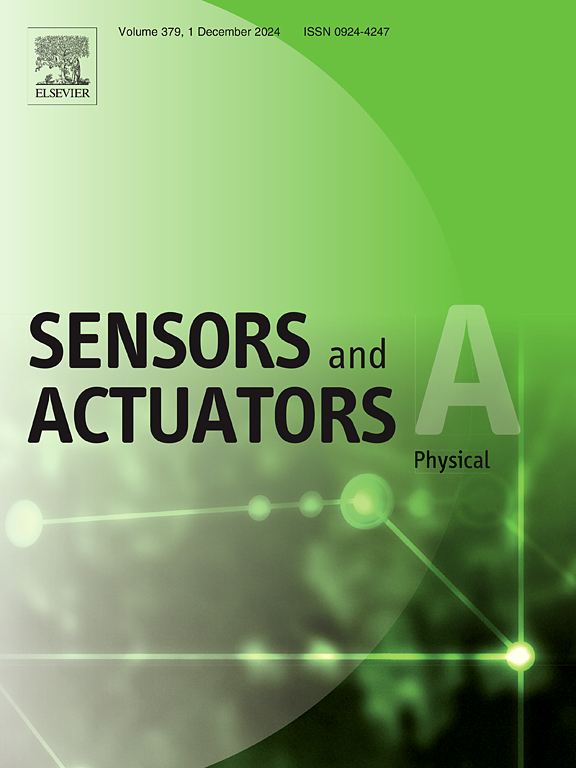Reducing the diameter of the atomized particles by coating polymer membrane on the inner wall of micro-tapered holes of the ultrasonic mesh atomizers
IF 4.1
3区 工程技术
Q2 ENGINEERING, ELECTRICAL & ELECTRONIC
引用次数: 0
Abstract
Atomized inhalation therapy with its rapid efficacy, low side effects and high medicine utilization, has become a crucial method for treating respiratory diseases. The depth of atomized particles deposition in the respiratory tract mainly depends on the particle diameter, making the reducing of the atomized particle size crucial for medicine deposit in lung. In the existing literatures, for the widely used dynamic mesh atomizer, the majority of the researches focused on the mechanical structure and the vibration characteristics of the atomizers. However, there is little researches on the micro-tapered holes of the metal sheet of the atomizer, despite the fact that the diameter of these tapered holes determines the size of the atomized particles. Due to the processing technology, the diameter of the micro-tapered holes cannot be further reduced, which greatly limits the development of the dynamic mesh atomizer in inhalation therapy. In this study, we consider the use of polymer coating on the inner wall of the micro-tapered holes to eliminate burrs, reduce the diameter of the holes, and ultimately reduce the size of the atomized particles. A theoretical model of the initial thickness of the coating polymer membrane and the rupture depth under the uniform air pressure applied to a single tapered hole was established. The metal sheets with different initial coating thicknesses were processed to verify the theoretical model by observing the quality of the inner surface and measuring the diameter of the holes. The particle size measurement experiment results show that when the initial coating thickness was 3 μm and 4.5 μm, the average particle sizes were reduced by 12.5 % and 23.2 %, respectively. Therefore, the proposed method can effectively reduce the atomized particles size, which helps to efficiently deposit atomized drugs in the lungs.
在超声波网状雾化器的微锥孔内壁上涂覆聚合物膜,以减小雾化颗粒的直径
雾化吸入疗法疗效快、副作用小、药物利用率高,已成为治疗呼吸系统疾病的重要方法。雾化颗粒在呼吸道内的沉积深度主要取决于颗粒直径,因此减小雾化颗粒尺寸对药物在肺部的沉积至关重要。在现有文献中,对于广泛使用的动态网状雾化器,大多数研究都集中在雾化器的机械结构和振动特性上。然而,对于雾化器金属片上的微锥孔的研究却很少,尽管这些锥孔的直径决定了雾化颗粒的大小。由于加工技术的原因,微锥孔的直径无法进一步缩小,这极大地限制了动态网状雾化器在吸入治疗中的发展。在本研究中,我们考虑在微锥孔的内壁上使用聚合物涂层来消除毛刺,减小孔径,最终减小雾化颗粒的尺寸。我们建立了单个锥孔在均匀气压作用下涂层聚合物膜初始厚度和破裂深度的理论模型。通过观察内表面质量和测量孔的直径,对不同初始涂层厚度的金属片进行了处理,以验证理论模型。粒度测量实验结果表明,当初始涂层厚度为 3 μm 和 4.5 μm 时,平均粒度分别减少了 12.5 % 和 23.2 %。因此,所提出的方法可以有效减小雾化颗粒的尺寸,从而有助于雾化药物在肺部的有效沉积。
本文章由计算机程序翻译,如有差异,请以英文原文为准。
求助全文
约1分钟内获得全文
求助全文
来源期刊

Sensors and Actuators A-physical
工程技术-工程:电子与电气
CiteScore
8.10
自引率
6.50%
发文量
630
审稿时长
49 days
期刊介绍:
Sensors and Actuators A: Physical brings together multidisciplinary interests in one journal entirely devoted to disseminating information on all aspects of research and development of solid-state devices for transducing physical signals. Sensors and Actuators A: Physical regularly publishes original papers, letters to the Editors and from time to time invited review articles within the following device areas:
• Fundamentals and Physics, such as: classification of effects, physical effects, measurement theory, modelling of sensors, measurement standards, measurement errors, units and constants, time and frequency measurement. Modeling papers should bring new modeling techniques to the field and be supported by experimental results.
• Materials and their Processing, such as: piezoelectric materials, polymers, metal oxides, III-V and II-VI semiconductors, thick and thin films, optical glass fibres, amorphous, polycrystalline and monocrystalline silicon.
• Optoelectronic sensors, such as: photovoltaic diodes, photoconductors, photodiodes, phototransistors, positron-sensitive photodetectors, optoisolators, photodiode arrays, charge-coupled devices, light-emitting diodes, injection lasers and liquid-crystal displays.
• Mechanical sensors, such as: metallic, thin-film and semiconductor strain gauges, diffused silicon pressure sensors, silicon accelerometers, solid-state displacement transducers, piezo junction devices, piezoelectric field-effect transducers (PiFETs), tunnel-diode strain sensors, surface acoustic wave devices, silicon micromechanical switches, solid-state flow meters and electronic flow controllers.
Etc...
 求助内容:
求助内容: 应助结果提醒方式:
应助结果提醒方式:


